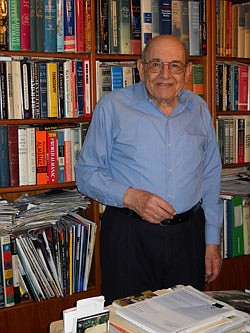
By Marvin R. Edwards
Special to the Daily Record
With all the talk these days of boomtowns, it is no more than right that Jacksonville gets its share of the limelight. When I first came down here from New York, I expected to see a large town with the people going about their daily routine in a monotonous fashion.
No one was ever more disillusioned, and I’ll tell you why.
A town of but 17,000 inhabitants in 1890, Jacksonville has grown to become the 47th largest city in the United States with a population in April 1940 of 175,000. It is interesting to note that half of the 46 larger cities are in seven states.
Since the last census, Jacksonville has been given another large injection of prosperity to increase its population by the thousands, and its wealth by the millions. It is the national defense program that has done so much to make it, and the surrounding territory, the most rapidly growing section in America.
Estimates of the number of people living in Jacksonville at present (April 1941) have been placed as high as 250,000.
Situated in Northeast Florida on the navigable St. Johns River, a short distance from the Atlantic Ocean, Jacksonville is the largest port city on the coast between Baltimore and New Orleans.
Because of its importance, ships that transverse between the northern cities, Latin America, the Pacific Coast ports and the Far East make Jacksonville a regular port of call. It has 62 wharves and terminals providing more than 8 miles of vessel berthing space, and depths alongside most of them are at 30 feet or more at mean low water.
Aside from being a good port for vessels, Jacksonville has excellent facilities for air, rail and highway transportation to all sections of the country. By rail it is served by four large lines, each of which has direct connections with other railroad systems throughout the nation. It has the largest and busiest railroad terminal south of Washington, D.C.
Jacksonville’s municipal airport is served by an average of 34 commercial airliners each day. New York is six hours and Chicago less than eight hours away by air. Southbound planes connect with Pan-American Lines at Miami, providing rapid transportation to Latin American countries.
The nation’s largest railway express terminal is located in Jacksonville. It has 131,000 square feet of floor space of recent construction, with a capacity for 25 70-foot express cars. It handles more than 20,000 shipments per day all the year round.
Retail sales in the city during 1939 totaled $58,153,000 and wholesale dollar volume was $153,606,000. The figures for 1940 are expected to be many millions more.
From a financial point of view, Jacksonville is the banking stronghold of Florida. It has three large national banks and a Federal Reserve Bank branch. Each bank has strong correspondent banks in all important cities of the country. Two members of the New York Stock Exchange operate branch offices and boards here with direct wires to the trading centers of the nation.
The principal manufacturing and processing in Jacksonville are lumber and millwork, pulp and paperboard, naval stores, pine tar products, cigars, chemical products, glass bottles, shipyards, gypsum products, meat packers, warehouse and refrigeration plants, and citrus fruit farms. The world’s largest factory under one roof is here.
Jacksonville is best known today for the great part it now is playing and will play in the defense program.
Thirty miles to the south is the $27.5 milion Camp Blanding, one of the nation’s largest training camps. When finished it is expected to house 65,000 men. The monthly payroll for both civilians and soldiers now numbers $3 million, most of which finds its way into the large metropolis of Jacksonville. The workers and soldiers have achieved an excellent reputation for keeping the greenbacks in circulation.
Not to be outdone, the Navy is completing on the outskirts of the city the largest airbase and training station under the Stars and Stripes. More than $25 million has already been spent in the construction of this magnificent air fortress. The civilian and service payroll at this base will soon amount to $1 million a month. When finished, it will have facilities for 20,000 men.
Weekday mornings and evenings, the traffic congestion is terrific in Jacksonville. The city has not been able to keep up with the large influx of people, for many of the streets are too narrow for the number of cars using them.
The housing and hotel facilities have also fallen behind the city’s rapid population growth. Over weekends there is not a room to be had in the hotels or rooming houses. Saturday nights, the downtown area reminds one very much of Times Square. All the theatres are jammed, and it’s almost impossible to find a place to park.
The future outlook for Jacksonville is very impressive. The fact that industries are migrating toward the South is well exemplified by the great increase in the number of factories and business firms located here.
Plans are now being completed by which a group of northern bankers will invest many millions of dollars for a large shipbuilding program in Jacksonville. This city is to play an important part in the “bridge of ships” across the Atlantic, especially since the Red Sea has been reopened.
As one now gazes in the distance, he can see the sun in a beautiful array of colors setting against Jacksonville’s skyline, which brings us to the end of our journey to this magnificent Southern city. That ringing sound you hear is a Southern belle calling me.
Au revoir you-all.
The memorial service for Marvin Edwards was Feb. 16.